Ceresit primer: pros and cons
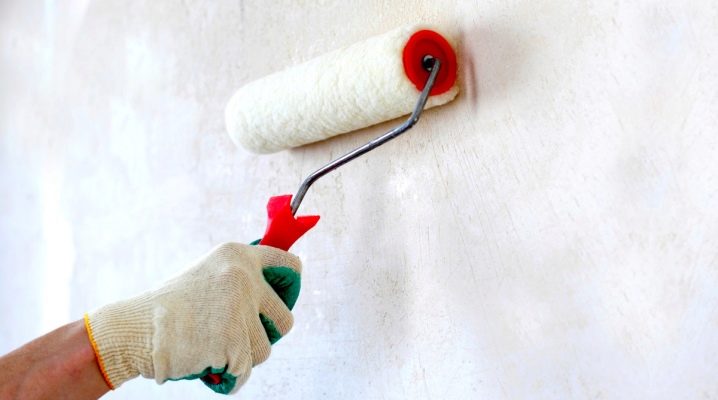
The primer is one of the most important and necessary finishing materials. Despite the fact that it is always hidden under a layer of topcoat, the quality of all finishing works and their final appearance will depend on its quality. The Ceresit primer is in the greatest demand today. We will talk about it in our article.

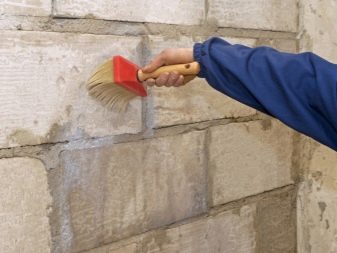
Peculiarities
The Ceresit primer is distinguished by its ultra-high permeability and ideally strong adhesion not only to the base of the working surface, but also to the top decorative layer. Therefore, it not only secures them separately, but also securely connects and holds them together.
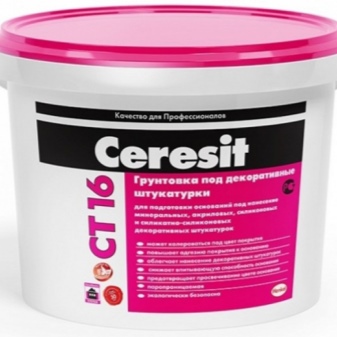
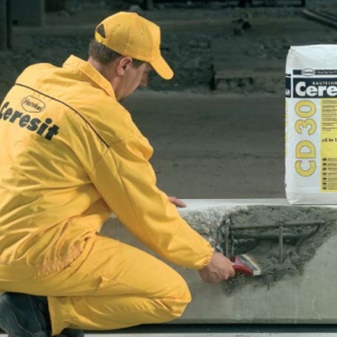
The competent approach of the manufacturer to the manufacture of primers allows you to endow them with additional special and important qualities. For example, there are primers with anti-corrosion functions or with the ability to inhibit harmful microorganisms.
Using the Ceresit primer, you can simultaneously solve several problems at once: leveling the surface, improving its adhesion, clogging the pores on the working surface and giving it an attractive appearance. Achieving these goals is possible thanks to a unique and well-thought-out composition.
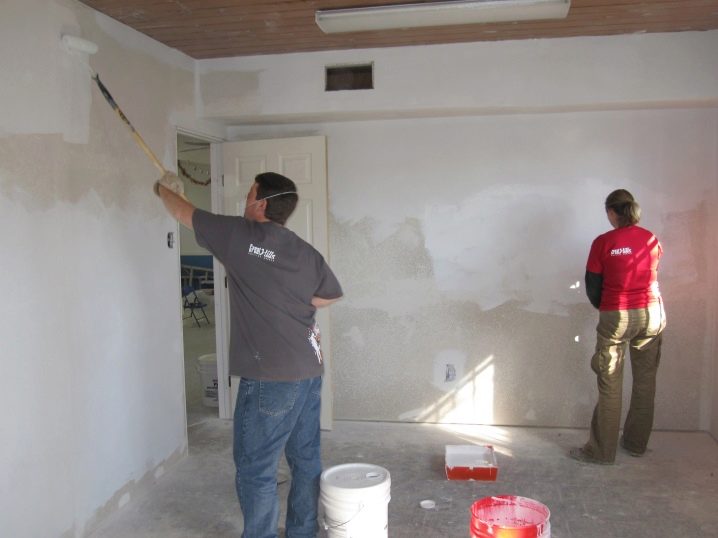
Also, due to the leveling of the surface, the absorbency of the working area of the finishing materials decreases. That is why all its parts are evenly colored in the future, and have the same color.
We can safely say that without a primer, high-quality finishing work is simply impossible. And in order to precisely achieve the best result, the manufacturer offers several types of this coating today.
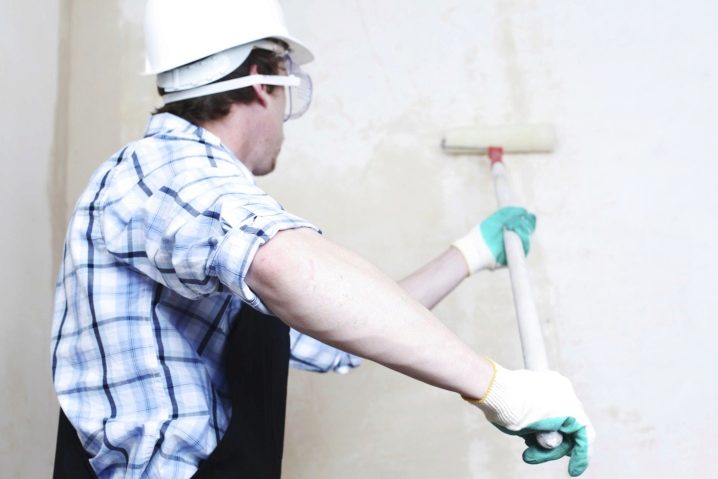
Types and characteristics
The Ceresit collection of primers includes several varieties, each with unique characteristics. Each type of primer is accompanied by a special instruction, the observance of which is the key to successful work.
- CT 17 Concentrate Is a versatile concentrate primer that can be used indoors and outdoors. Ideal for deep impregnation of all surfaces with a weak base. The optimum ambient temperature during operation is from 5 to 35 degrees above zero. The maximum allowable humidity is 80%.

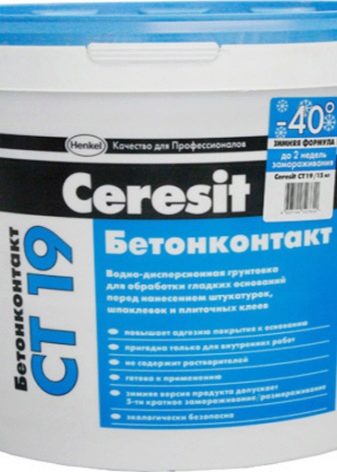
- "Betonkontakt ST 19" has a water-dispersed basis, has good moisture resistance. Due to the fact that "Betonokontakt" contains sand, its surface is slightly rough and improves the adhesion of the primer to the final finishing coat. This quartz impregnation is suitable for interior work, intended for application to concrete before plastering, filling or painting.
- "IN 10 Ground Interior" Is an anti-fungal impregnation for interior work. She can process walls and ceilings before wallpapering, painting, as well as puttying or plastering. Such a primer is not suitable for laying on top of tiles.

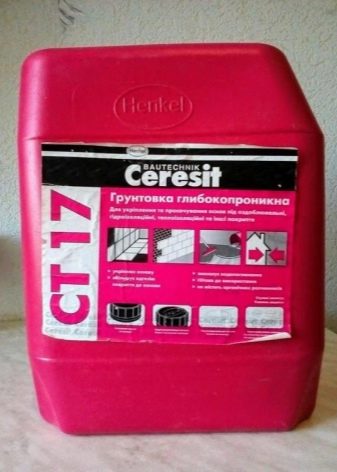
- Ceresit CT 17 - is a universal impregnation with deep penetration. Suitable for indoor and outdoor use. It is realized in two forms with the marking "winter" or "summer", which indicates for which particular season of the year the given primer mixture is suitable. Most often used for floor screed. The use of such a primer requires the preliminary application of a degreaser.
- Ceresit R 777 Is a special mixture designed for surfaces with a high absorbency level.It not only reduces this indicator, but also strengthens the base and improves the flow of other mixtures. It is environmentally friendly, suitable for treating the floor before screed. It can only be used indoors, it is resistant to low temperatures and does not lose its properties when frozen.
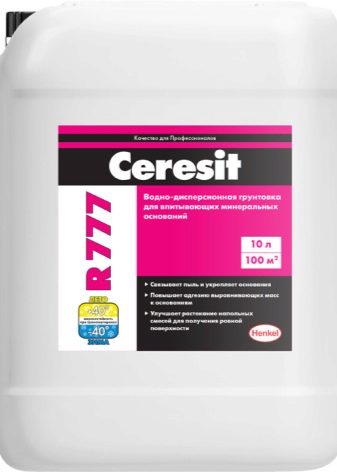
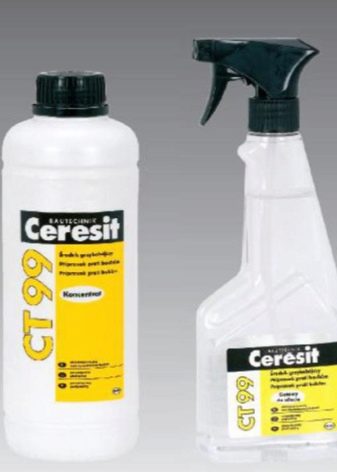
- ST 99 it is used not only to eliminate the existing fungus on any surfaces, but also to prevent its further appearance and growth. This primer has fungistatic properties, has a specific aroma that quickly disappears. It is safe for humans and the environment, and does not leave any residue on the work surface after being absorbed. Before use, it requires dilution with water in accordance with the instructions.
- ST 16 Is a special quartz primer mixture that is applied to surfaces to be plastering further. It comes on sale in white, which can be changed by the consumer at will by using different colors. After drying, the surface becomes slightly rough due to the presence of sand in the composition. Can be used on all surfaces, except ceramic tiles and substrates with an oily top layer.
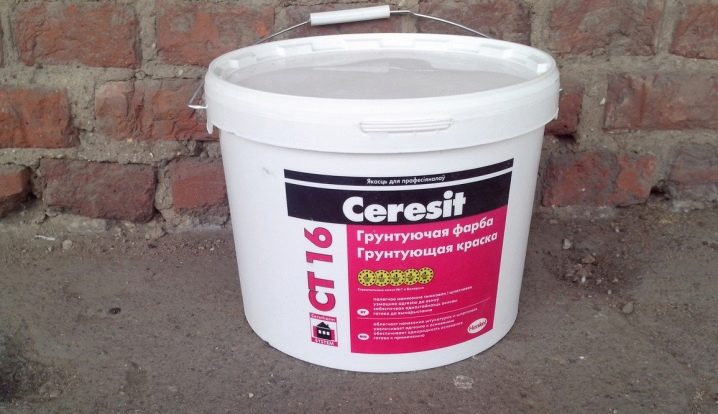
When faced with such an assortment of primers for the first time, an inexperienced buyer will not immediately be able to navigate and make a choice. Therefore, you need to follow useful recommendations.
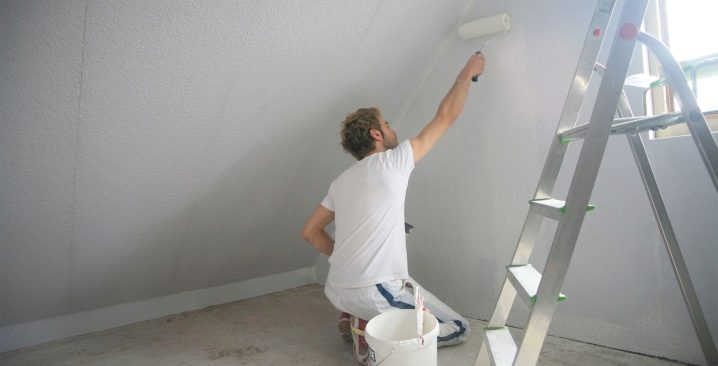
How to choose?
In order for the planned finishing work to be performed correctly, reliably and efficiently, you must remember that:
- It is necessary to choose a primer based on the material used in the production of the working area.
- If the work will be carried out outside the building, it must be indicated on the packaging that the primer mixture is moisture resistant.
- Before buying, it is necessary to study all the available types of primer and assess the volume and complexity of the upcoming work. Only after analyzing the information received, you can make a choice in favor of a particular product.
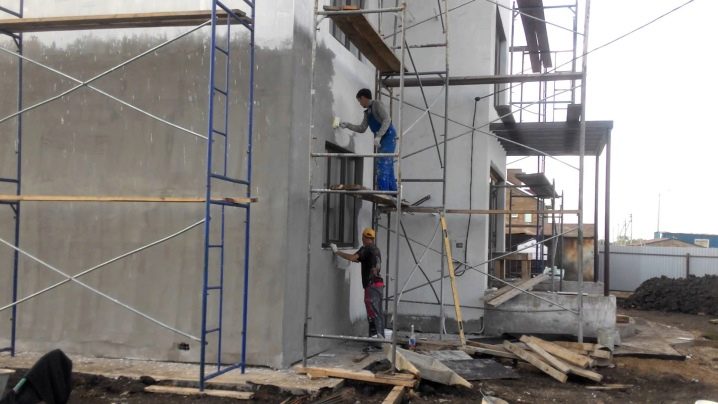
- If the primer will be applied to an already plastered surface, then first you need to check its porosity. To do this, wet a small area of the surface with water and note the drying time. If it is less than 3 minutes, then it is necessary to purchase a special strengthening primer mixture.
- It is necessary to take into account not only the material for manufacturing the working area, but also further actions with the primed surface. If the primer is not intended for further painting, then it cannot be used under the painted surfaces.
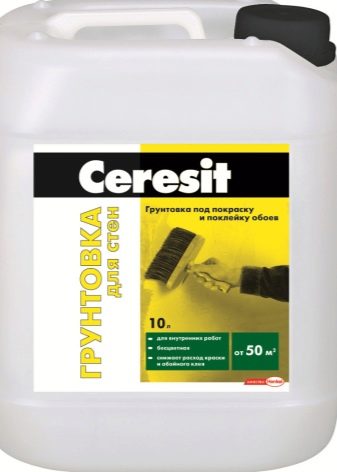
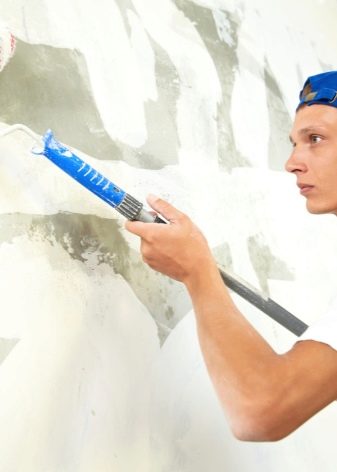
- Under the wallpaper, it is better to choose a white product with a maximum absorption level.
- You cannot use the formulations in the cold season at sub-zero temperatures, if the manufacturer has not indicated information about such a possibility.
- It is not recommended to use a primer mixture intended for the treatment of curtain and walls, when working with the floor, and vice versa.

Guided by the choice of these simple rules, you can choose the really optimal primer for performing work on any surface.
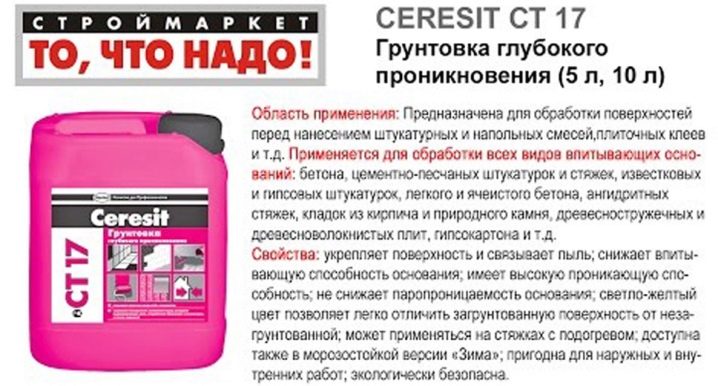
Reviews
The manufacturer himself positions all his primers as one of the best available on the market today. The objectivity of such an assessment can be assessed by learning the reviews of the buyers themselves.
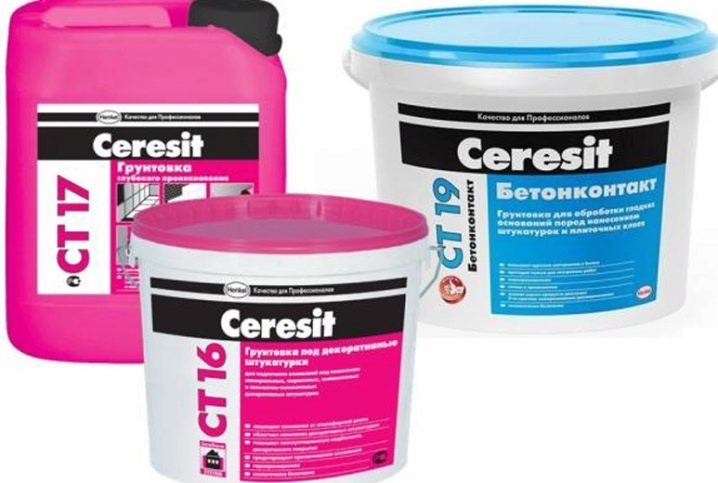
Ceresit is a fairly popular brand that is in demand both among professional decorators and ordinary citizens. Ordinary buyers generally rate these products positively. The main advantages are an affordable price, a fairly wide range, and ease of use. For many buyers, an important point is the choice of a primer that will help solve some specific problems, for example, with mold and mildew.

Professional decorators generally support the accolades. They especially note the high quality of the primer of this brand, its economical consumption and full compliance with the declared functions. This means that if the manufacturer indicated that the primer evens out the color of the working area, then in fact it will. Professionals consider it a big plus that they can choose a primer mixture for any material and for any further finishing work. This allows you to always be confident in the high quality of the activities carried out.

If you believe these reviews, then the Ceresit primer of all varieties is really one of the best today. The main thing is to choose the right mixture and use it correctly.
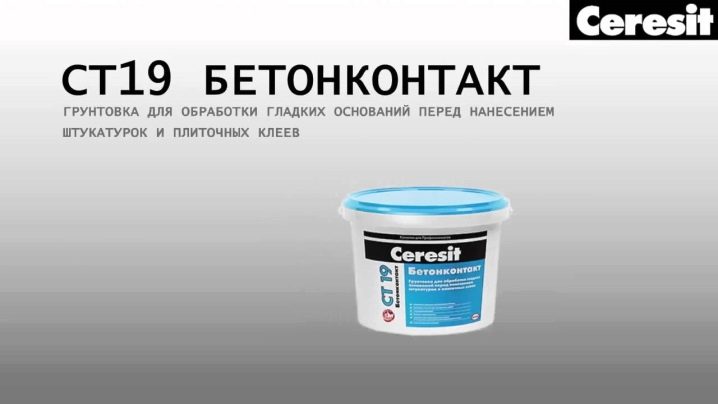
Application Tips
To get the most out of using this tool, you need to know how to use it correctly.
The following steps must be performed sequentially:
- Clean the surface to be primed from any foreign matter. This includes remnants of old paint and wallpaper, dust, dirt and any foreign objects.
- The working area is additionally leveled. If the defects are too large, it is necessary to plaster the surface. If they are insignificant, then you can get by with a simple grout using a special grater.
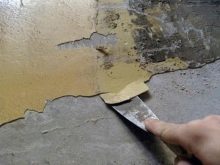
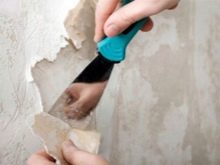
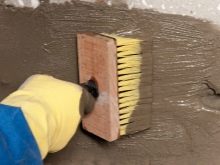
- If there are traces of mold, mildew or unknown damage on the surface, they must be cleaned manually or removed with a special compound.
- Stir or shake the primer thoroughly. This will allow all active substances to be evenly distributed again throughout its volume.
- Using a roller on the handle or a wide paint brush, the primer is evenly applied to the entire work surface in one layer.
- If the working area has an increased level of porosity, then after the first layer has completely dried, another one can be applied.
- It is allowed to apply additional topcoats over the primer only after it is completely dry.
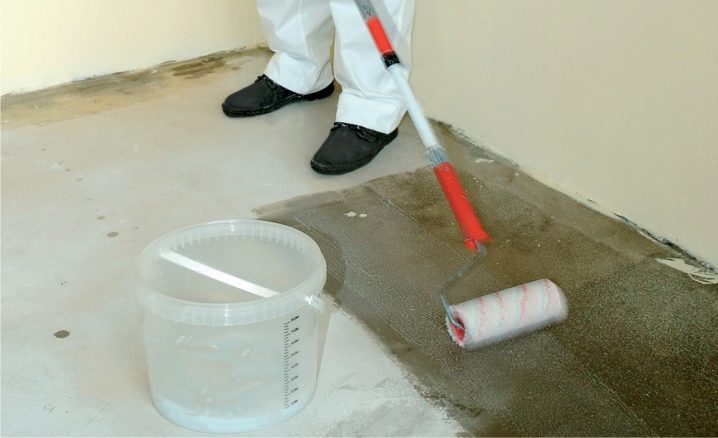
Following such a simple but important sequence of actions will ensure a high-quality work result.
Helpful hints
Before purchasing and direct use of the primer, be sure to check the safety of the packaging and its expiration date. If they are violated, then it is not recommended to use a mixture for work. The result of such actions can be unpredictable.
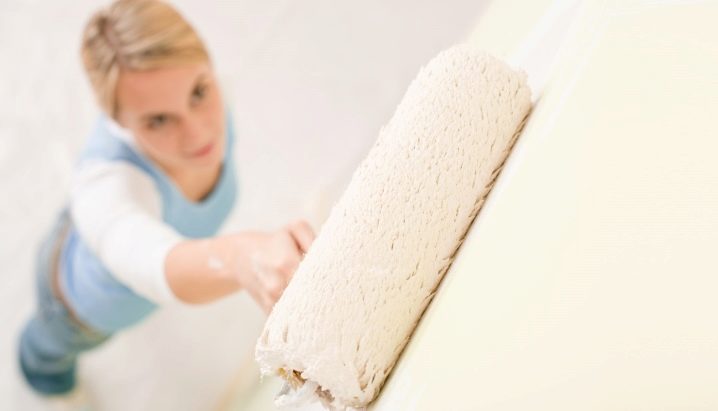
All preparatory steps for cleaning the working area are best done a few hours before using the primer, and even better a day. It is not recommended to apply the mixture in three layers. The second coat, if necessary, can only be applied after the first coat is completely dry; this will take about 20 hours.
All materials and tools used in the process of work must be rinsed in warm water or soaked in it immediately after use. So it will be much easier and faster to remove the remains of the primer from them.

The competent choice and use of the Ceresit primer will allow you to qualitatively and fully prepare any work surface for further finishing work.
The result of the application of the Ceresit CT 17 deep application primer, see the video below.













The comment was sent successfully.